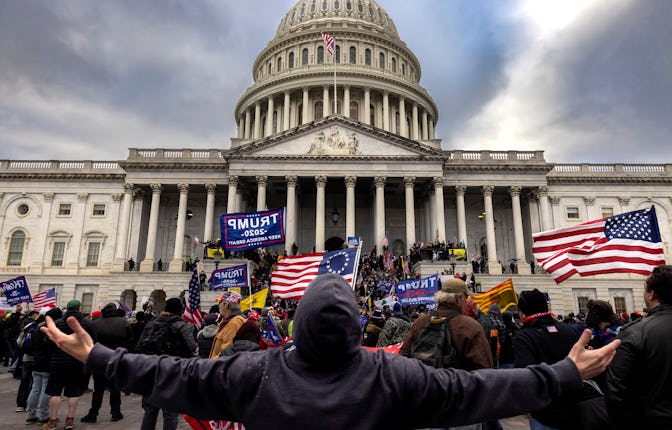The Jan. 6 committee hearings are about narrative, not news
Can a prime-time televised congressional event move a needle already buried under years of ossified opinions?

It’s been a year and a half since a frenzied mob of seditionists, animated by an infusion of blustery fascism, stormed the halls of Congress promising death to a slate of perceived “enemy” lawmakers while seeking to overturn Joe Biden’s electoral victory. In the time since then, the public (at least, the part paying attention) has learned a tremendous amount about the events preceding, during, and following the Jan. 6 insurrection — particularly the inarguable role Donald Trump and his cadre of enablers played in fomenting the worst eruption of organized violence in the United States Capitol Building since the War of 1812.
On Thursday, the House’s bipartisan Select Committee tasked with investigating the insurrection will hold its first public hearing in nearly a year — and its first prime-time event ever — in what it claims will “provide the American people an initial summary of its findings about the coordinated, multi-step effort to overturn the results of the 2020 presidential election and prevent the transfer of power.”
In this, the committee (and, let’s be honest here, it’s the Democrats as a whole plus, like, two or three Republicans) finds itself in a bit of a problem of its own making. By capping a year of investigations with a live hearing in prime time, the panel has raised public expectations for the sort of seismic revelations that merit a must-see-TV event in the same time slot as Thursday Night Football. And yet, short of verified, watermarked footage of Donald Trump saying “I want people to carry a gallows and hang anyone who votes to certify Joe Biden as president” to a crowd of Proud Boys, what exactly could rise to meet those exaggerated prospects? Thanks to a year’s worth of legal filings, congressional statements, and separate — but parallel — news investigations, we already have a pretty solid understanding of the Jan. 6 insurrection, and the Trump team’s machinations leading up to and during it. We might not have all the nitty-gritty details, but the big picture is there for anyone so inclined to piece it all together.
And that, it seems, is what Thursday evening’s hearing, and the others over the coming weeks, will actually be about: less revelation and more cohesion. Sure, there may be some very specific bombshells about who said what to whom in whatever sort of encrypted messenger program along the way, but they’ll be ancillary to the broader effort of creating a coherent narrative from the available information, aimed at the segment of the public that hasn’t already been following the steady drip-drip-drip over the past year.
This, unfortunately raises a larger, more problematic question for the committee: Who, exactly, is this for? Consider a Venn diagram of the following three segments:
- People who are interested in what happened on Jan. 6, 2021.
- People who have thus far not been following the various investigations about Jan. 6.
- People who have not yet made up their mind about what happened on Jan. 6, and who is responsible.
It would seem that the ideal audience for the televised hearings is someone who occupies the impossibly narrow space where all three segments overlap. And given the seeming incongruity of those three types — particularly knowing that the only softening in the otherwise largely ossified public opinions on Trump’s role in the insurrection has been in his favor — it seems the committee might as well be broadcasting for a unicorn or the Mothman.
That, more than anything else, is the committee’s challenge: not simply connecting the dots to create a coherent narrative, but doing so in such a way that it both attracts the attention of people who have previously checked out of the whole subject, and manages to move the needle among those who are predisposed to downplay, or even support, Trump’s role in the insurrection.
To that end, those expecting fireworks on Thursday night will likely be disappointed. The committee’s witness list for this first prime-time broadcast is just two people: a documentarian who was embedded with a cadre of Proud Boys before and during the insurrection itself, and a Capitol Hill police officer who was on the receiving end of the seditionists’ violent assault. This is the sort of testimony designed to add color and texture to an event that may have been flattened by the intervening months; these witnesses are there to paint an emotionally stirring picture through their firsthand experiences. It’s a sign that the committee understands that, absent a smoking gun, their best bet for making an impact is by hitting the emotional beat as much as the factual one.
It’s a solid plan. It remains to be seen, however, if a year and a half after the shock of the insurrection has largely dimmed, it’s just too little too late.